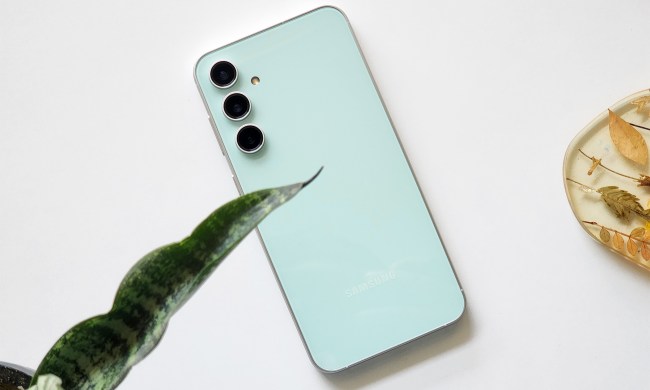The new Galaxy S21 and Galaxy S21+ phones have big Dynamic AMOLED 2X screens, which at first seems to continue the established tradition of Samsung’s S Series phones delivering a stunning visual experience. But when you examine the resolution, it seems to only follow the good old tradition in part, because, shockingly, two of Samsung’s new leading Galaxy S phones have FHD+ resolutions, which is a meager 2220 x 1080 pixels.
Call the Galaxy S21 a flagship phone? You have got to be kidding, right? If you’re outraged by this decision that quite literally offends your eyes, then please read on.
I want flagship specs throughout
You know which other phones have FHD+ resolutions? The Galaxy S20 FE, the Galaxy A71, and any number of “mid-range” phones including the Motorola Edge Plus. None of which cost $1,000, or would be called a flagship. If I’m spending a chunk of hard-earned cash on a top-spec phone, I want to win every time I compare specs with the sub-par devices my friends have stupidly chosen.

The Galaxy S20 and Galaxy S20+ have stunning, wonderful, fabulously colorful Dynamic AMOLED 2X screens on the front with huge WQHD+, or 3200 x 1440, resolutions. These numbers, in case it’s not immediately obvious, are higher than the Galaxy S21’s numbers. What’s more, the numbers taken from the OnePlus 8 Pro, the Asus ROG Phone 3, and even the iPhone 12 Pro are higher too. Samsung has made the Galaxy S21 the Top Trump card you hope to never pull.
Numbers matter, and higher ones mean my phone is not only better than yours, but in the case of the screen, they mean pin-sharp detail for all my games, videos, and photos. Staring into the screen, I want to get lost in the image, and to do so, I need all the pixels. Every single one of them, and if they’re lacking, then I’m going to feel short-changed. Not good after spending $1,000.
Really?
How long did you think I could keep the outrage going? Three paragraphs isn’t bad, and more than I thought I’d be able to. It is, of course, mock outrage, a sarcastic knee-jerk reaction to a nonetheless surprising decision on Samsung’s part to take a step back from monster resolution screens on the Galaxy S21 and Galaxy S21+.
The only people who will be upset by the Galaxy S21’s FHD+ screens are the spec-warriors parodied above. Almost everyone else won’t really notice any difference for a couple of reasons. The first is the Galaxy S20, S20+, S20 Ultra, Note 20 Ultra, and a few other phones with a QHD resolution default out of the box to FHD+ anyway. It means unless you purposely altered the setting, you’ve been staring at an FHD resolution regardless of its overall ability. You stared at an FHD+ resolution with the smugness of knowing you have the highest resolution … even though you weren’t actually seeing it.
Samsung’s phones all defaulted to FHD+ out of the box anyway, so stop complaining.
The other reason is you have to look really, really hard to spot the upgrade from FHD+ to WQHD+ on such a small screen. In my experience it takes a fair amount of peering, pausing, and examining when testing phones back-to-back in order to maybe see it at all. Not something regular people will do.
There is a difference between the Galaxy S20 FE’s FHD+, 407 pixel-per-inch density screen and the Galaxy S20+’s WQHD+’s 525ppi screen, but it’s more about when the display’s performance is judged as a whole, as due to the small size, your eyes are unlikely to see any detail differences from the pixel counts.
Worth the trade-off
Am I saying the extra pixels don’t matter? Absolutely not. For a start, an FHD+ resolution screen is at odds with today’s obsession with 4K and 8K video recording, 4K Netflix plans, and 2K YouTube videos, but that’s all more relevant on much larger screens where we actually can see the pixel upgrade. Also, while I mock concentrating on specs, there’s still something to be said about having the very best of everything in your phone, and even if it’s a placebo effect, Samsung’s WQHD+ screens are utterly stunning.

Samsung’s doing it right. Save the WQHD+ resolution screens for monster phones like the Galaxy S21 Ultra and the Galaxy Note 20 Ultra. Stick with FHD+ on regular phones to lower the price and increase the battery life. The Galaxy S21 costs $799, rather than matching the $999 price of the S20, and the screen almost certainly plays a part in the welcome price drop. It’s the same for the Galaxy S21+, which costs $999, and not $1,199.
Don’t look at the new Galaxy S21 and Galaxy S21+ and immediately write them off due to any perceived “downside” of a FHD+ resolution. Instead, rejoice that you’re about to get a cheaper phone and that your eyes probably aren’t even capable of noticing one of the main reasons why.



